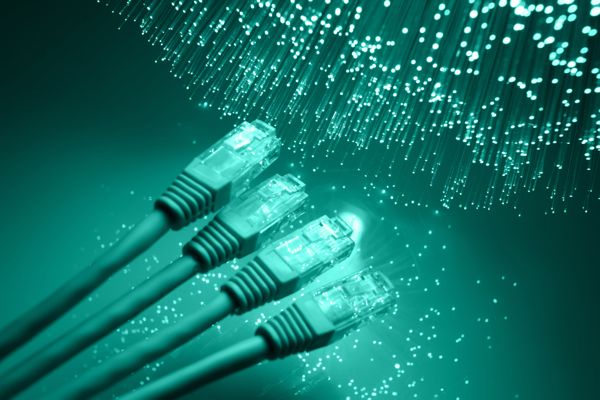If it’s Ethernet versus Godzilla, then Godzilla is DOCSIS
 Two weeks ago I was at the Computer History Museum to help observe the 40th anniversary of Ethernet. It was literally 40 years to the day since Bob Metcalfe drew his first sketches of what became the world’s dominant OSI Level 2 network technology. It was a fun and festive day that ended, believe it or not, with dancing. But some of the celebration didn’t make sense to me. Or, rather, it seemed to me that important parts of the discussion were missing.
Two weeks ago I was at the Computer History Museum to help observe the 40th anniversary of Ethernet. It was literally 40 years to the day since Bob Metcalfe drew his first sketches of what became the world’s dominant OSI Level 2 network technology. It was a fun and festive day that ended, believe it or not, with dancing. But some of the celebration didn’t make sense to me. Or, rather, it seemed to me that important parts of the discussion were missing.
When, for example, did 802.11 WiFi become a part of 802.3 Ethernet? That claim was made over and over during the day and helped power the argument that Ethernet is today a $100 billion business. Yeah, right.
Parts of that argument are true. Certainly Ethernet is dancing on the grave of Arcnet and Token Ring. When Howard Charney of Cisco said that Ethernet accounts for 98 percent of the network interfaces shipping now from Cisco (if you pretend that WiFi is Ethernet) it had a world of meaning for the rise of Metro Ethernet and the decline of DS1 (T-1) and DS3 (T-3) connections — connections that have been Cisco’s profit centers until just now.
So this claim of all-Ethernet, all the time, is a big deal and has vast implications for Cisco’s future business and that of its competitors, but it doesn’t mean Ethernet is now the only game in town.
Cisco has made a fortune on traditional telephone circuits: (DS1 and DS3 interfaces) and CCIEs (Certified Cisco Internetwork Experts — don’t call them engineers) have made a good living keeping those clunky router interfaces running. Yet it hasn’t made sense to me for years that I could get 15+ megabits-per-second for around $30 through my cable or DSL modem when businesses were paying 15 times as much for 1.5-megabit T-1s that offered no scalability and problematic provisioning. That’s what appears to be finally changing and with it will change the required skill sets of CCIEs.
If the new network is really Ethernet end-to-end (LAN-to-WAN) then only a subset of CCIE training will be soon needed, right?
Not so fast.
Here’s another, slightly different, view of where Ethernet is going thanks to discussions with friends and CCIE’s like my friend George Morton who are living in those network trenches. Where one of the themes of the Museum event for example, seemed to be SONet is dead, it might be just as correct to say SONET is Ethernet.
I know, Mr. Smartypants, that SONET is Layer 1 while Ethernet is Layer 2, but Bob Metcalfe, himself, spoke at the event of Ethernet as a “SONET-killer,” yet I don’t see SONET disappearing soon where fiber is already installed.
What really stands in the way of Metro Ethernet are DOCSIS 3.0, (170Mbps/110Mbps) and 3.1, (10Gbps/2.5Gbps) — data technologies from your cable company.
The network in the next few years will see further LAN migration away from Ethernet toward WiFi with the NSA wireless security Suite-B and the new 1.3Gbps 802.11ac and ae WiFi protocols. The best way to think about this transition is there’s no way to easily do wired Ethernet with mobile devices so as the client mix changes, WiFi will naturally come to dominate.
From an operational cost perspective why pay cable costs of $100 to $200 for each copper Ethernet port, then buy a switch for each very expensive copper cable?
Cisco sees this change and as a result recently bought Meraki for cloud management of WiFi services.
You can see this trend toward wireless already with the number of WiFi-only products that connect to the LAN in your home like those cheaper Roku boxes that don’t even include an RJ45 port.
So here’s the real state of Ethernet at 40:
Data Center networking will be 10/40/100GbE.
The Metropolitan Area Network (MAN) will be Ethernet over Multiprotocol Label Switching (MPLS — a combination of Layer 2 and 3 technologies) or Virtual Private LAN Service (VPLS) which is layer 2 — essentially wide area Ethernet. But the Layer 1 protocols will be SONET, and DOCSIS, with DOCSIS eventually winning because of lower cost of deployment, (cable is cheaper to deploy versus fiber to the building).
The way DOCSIS wins for MAN and WAN access is because of lower cost. Here are some numbers from my own recent network shopping trip:
Service Monthly Rate
DS1 with MPLS and router $550
DS3 with MPLS and router $2,250
DOCSIS Private MAN 2Mbps $310
DOCSIS Private MAN 50Mbps $1,265
These DOCSIS services, by the way, were both Comcast Business Class Ethernet Network Service Premium with latency guaranteed less than 12ms, jitter less than 2ms, and packet loss less than 0.001 percent.
The market supremacy of Ethernet in the WAN and MAN, then, is not so much about the protocol but about operating costs. Looking at it another way, it’s all just marketing.
Even Metro-Ethernet ISPs have a hard time matching DOCSIS prices because of the cost of build-out. Telephone companies never intended fiber to be in the local loop, only twisted pair. Ethernet will shift from the LAN protocol to become the MAN/WAN protocol for edge delivery.
Who is going to deliver the bits is the question and in the end price will determine that. Remember ATM? It wasn’t bad, just too expensive.
Reprinted with permission
